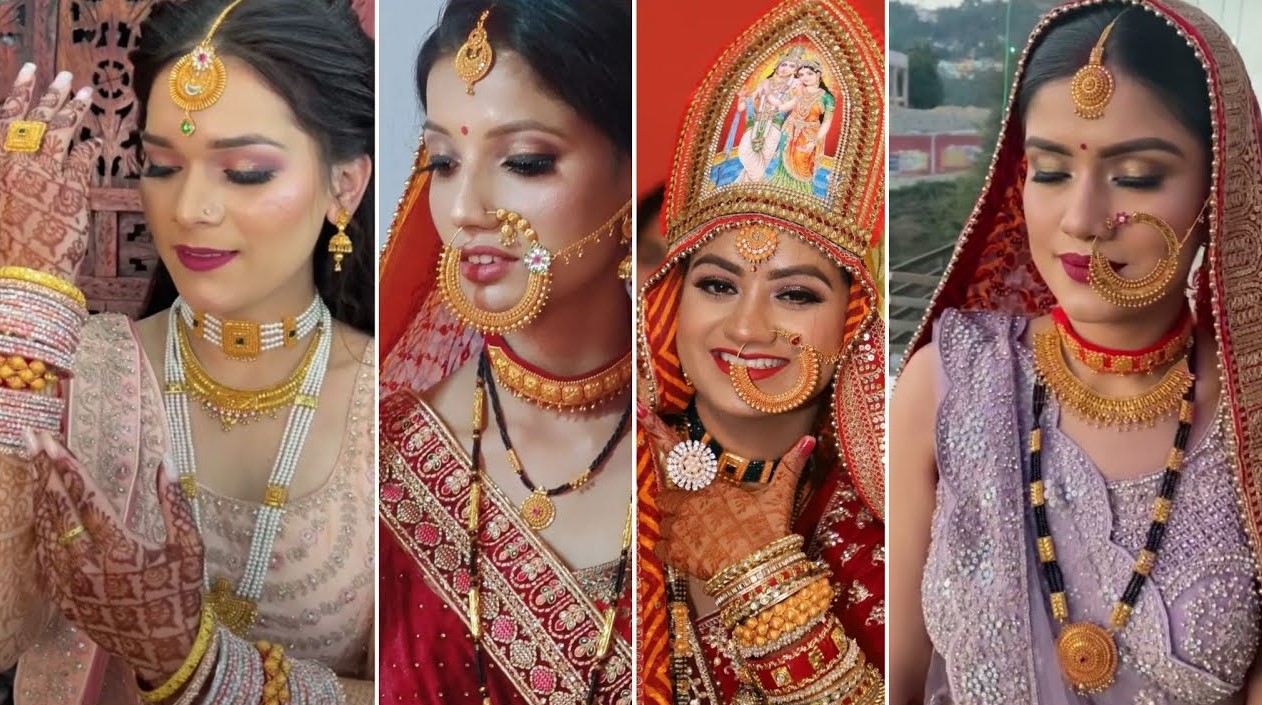Jewelry has always been an integral part of Indian tradition, symbolizing not just beauty but also cultural significance and heritage. For women in India, jewelry is more than just an accessory; it is an embodiment of their identity, heritage, and pride. Uttarakhand, a land renowned for its natural beauty and rich cultural tapestry, showcases this sentiment through the exquisite traditional jewelry worn by its Pahadi women. However, with the advent of modernity and contemporary designs, the prominence of traditional jewelry has witnessed a decline. This article delves into the importance of traditional jewelry in Uttarakhand, its unique designs, and the impact of contemporary trends.
The Significance of Traditional Jewelry in Uttarakhand
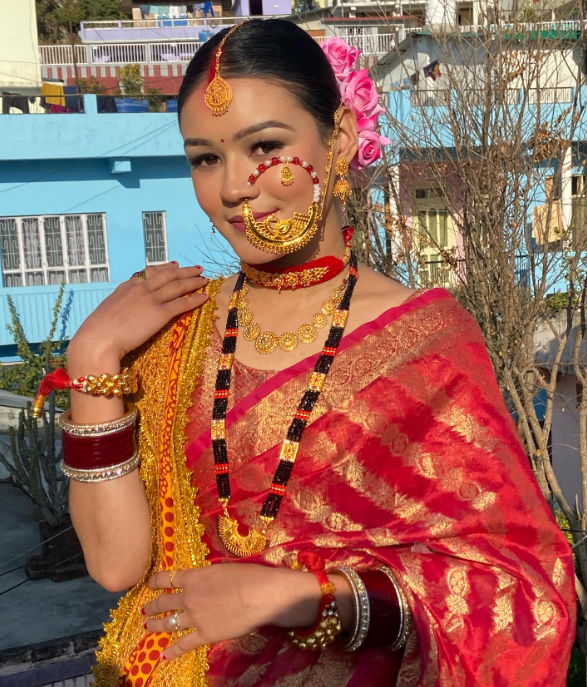
Traditional jewelry in Uttarakhand is a testament to the region’s rich cultural heritage and craftsmanship. Each piece tells a story, representing the history, beliefs, and customs of the Pahadi people. These ornaments are not merely decorative but carry deep-rooted significance, often linked to social status, marital status, and regional identity.
Cultural Symbolism: Jewelry pieces like the ‘Nath’ (nose ring), ‘Paunje’ (anklets), ‘Hansuli’ (necklace), and ‘Karnphool’ (earrings) are imbued with cultural symbolism. For instance, the ‘Nath’ is a prominent bridal ornament, signifying marital status and is often passed down through generations as a family heirloom.
Artisanal Craftsmanship: The intricate designs and meticulous craftsmanship of Uttarakhand’s traditional jewelry reflect the skill and artistry of local artisans. These pieces are often handcrafted using techniques that have been perfected over centuries, involving detailed filigree work, enameling, and the use of semi-precious stones.
Material Significance: Traditional jewelry often incorporates materials like gold, silver, and copper, each chosen for their symbolic meanings and economic value. Gold signifies prosperity and purity, while silver is believed to have protective qualities.
Iconic Traditional Jewelry of Uttarakhand
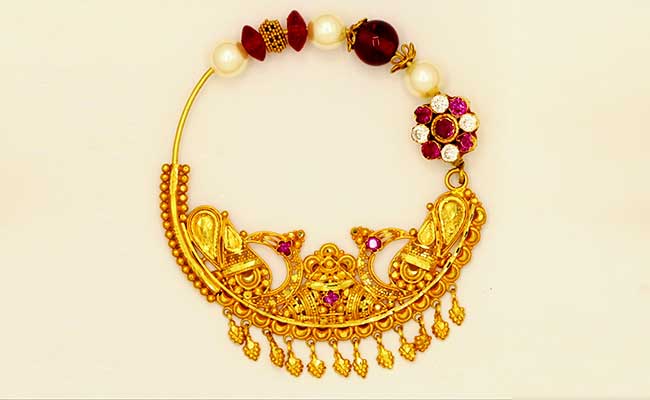
- Nathuli: The oversized nose ring, often adorned with precious stones and intricate designs, is a hallmark of Pahadi bridal attire. It symbolizes purity and is considered a mark of a married woman.
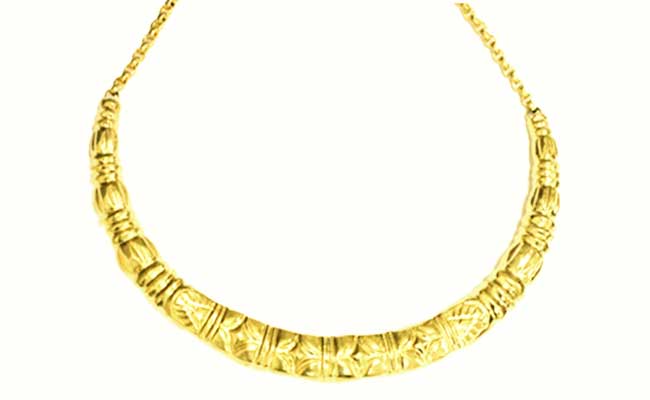
- Hansuli: This crescent-shaped necklace, worn close to the neck, is made of silver or gold. It is a symbol of affluence and is worn during important cultural and religious events.
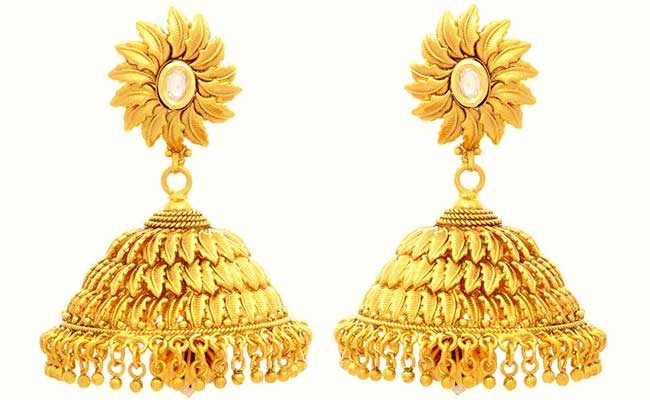
- Kundan Jhumkas (Kanphool): These elaborate earrings, crafted with Kundan work, are a blend of Mughal and Pahadi artistry. They are often worn during festivals and weddings, adding a regal touch to the attire.
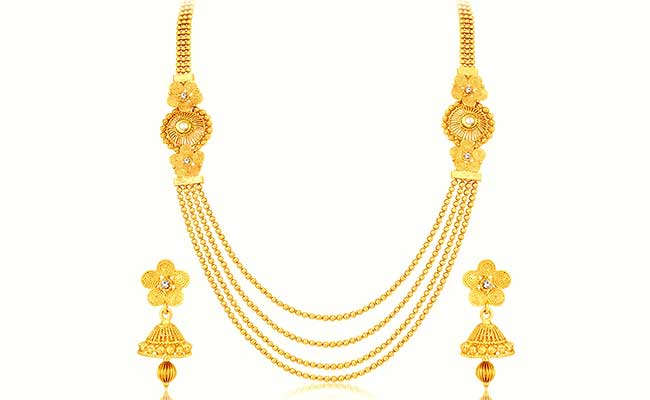
- Chandrahar: A layered necklace that resembles a garland, Chandrahar is typically made of gold and is worn during special occasions like weddings and religious ceremonies.
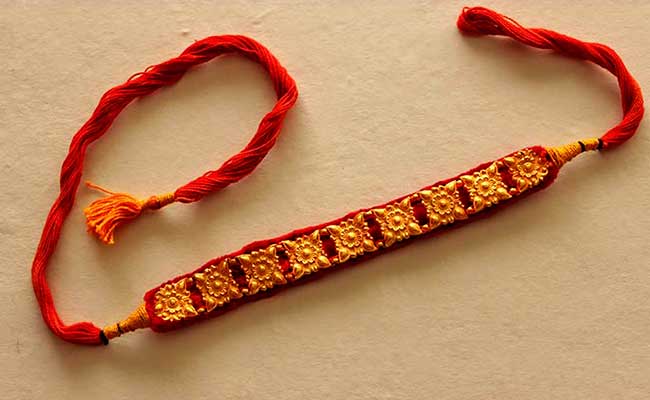
- Globand: A traditional choker necklace, Globand is a striking piece of jewelry worn close to the neck. Often made of gold or silver, it features intricate designs and is typically embellished with colorful beads or gemstones. The Globand is a symbol of grace and elegance, often worn by women during festivals and special occasions.
The Shift Towards Contemporary Designs
In recent years, the rise of contemporary jewelry designs has overshadowed the traditional pieces. This shift can be attributed to several factors:
Changing Tastes and Preferences: Modern women, especially the younger generation, often prefer sleek, minimalist designs over the elaborate traditional jewelry. Contemporary pieces are seen as more versatile and easier to wear on a daily basis.
Influence of Global Fashion Trends: The influx of global fashion trends has introduced new materials, styles, and designs, leading to a fusion of traditional and contemporary aesthetics. This blend often results in jewelry that retains cultural elements while embracing modernity.
Economic Factors: The high cost of traditional jewelry, particularly those made of gold and precious stones, makes contemporary designs, which often use more affordable materials, a more economical choice.
Convenience and Comfort: Traditional jewelry, though beautiful, can be heavy and cumbersome. Contemporary designs prioritize comfort and practicality, making them more suitable for everyday wear.
Reviving the Tradition: A Path Forward
Despite the growing preference for contemporary designs, there is a renewed interest in preserving and reviving traditional jewelry. Efforts are being made to blend traditional craftsmanship with modern designs, creating pieces that appeal to both heritage lovers and fashion enthusiasts.
Cultural Festivals and Exhibitions: Cultural festivals and exhibitions showcasing traditional jewelry play a crucial role in preserving this heritage. These events not only highlight the beauty and significance of traditional pieces but also provide a platform for local artisans to display their work.
Fashion Collaborations: Collaborations between traditional artisans and contemporary designers can result in innovative designs that retain cultural essence while catering to modern tastes. Such initiatives can help revive interest in traditional jewelry.
Awareness and Education: Educating people about the cultural and historical significance of traditional jewelry can foster appreciation and pride in this heritage. Workshops, documentaries, and social media campaigns can be effective tools in this endeavor.
Incorporating Tradition in Modern Celebrations: Encouraging the use of traditional jewelry in modern celebrations, such as weddings and festivals, can keep these traditions alive. Brides opting for traditional jewelry over modern designs set a trend that blends the old with the new.
Conclusion
The traditional jewelry of Uttarakhand is a reflection of the region’s rich cultural heritage and artisanal prowess. While contemporary designs offer convenience and modern appeal, the timeless elegance and cultural significance of traditional jewelry remain unmatched. By embracing and promoting these exquisite pieces, we can ensure that the heritage and craftsmanship of Uttarakhand continue to shine, preserving the legacy for future generations. Whether through cultural festivals, fashion collaborations, or educational initiatives, there is a path forward that honors the past while embracing the future.

